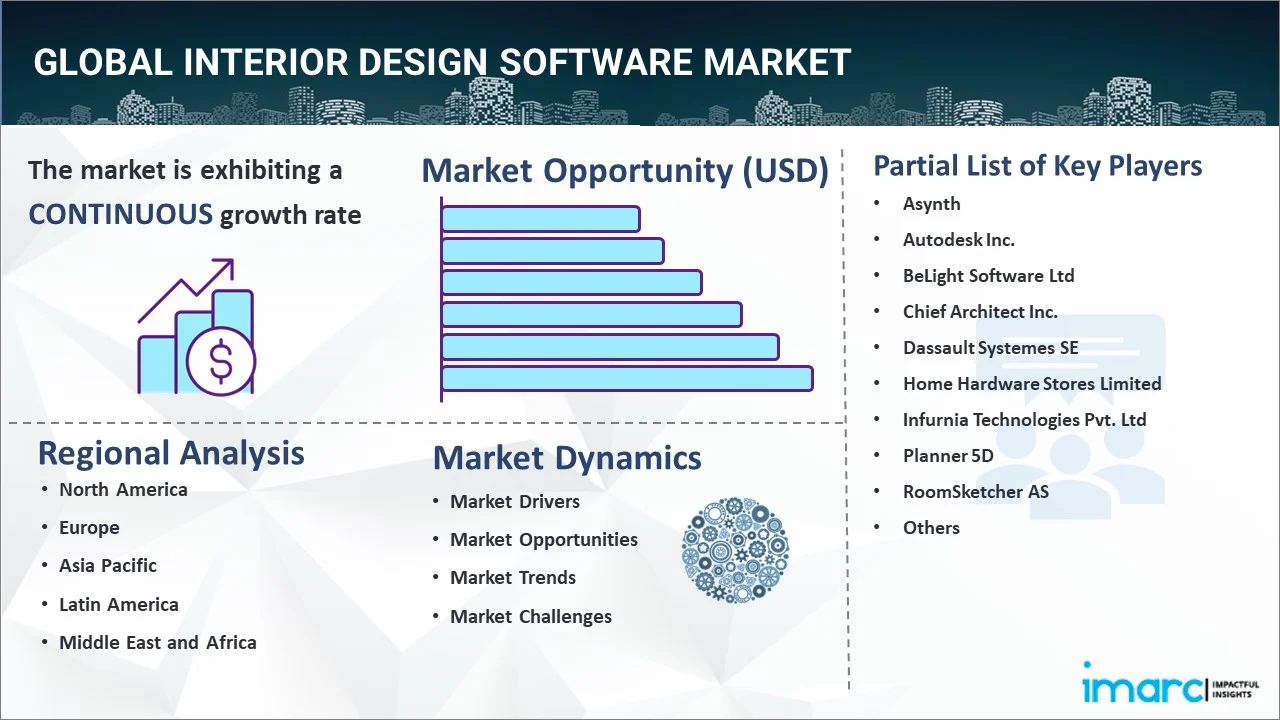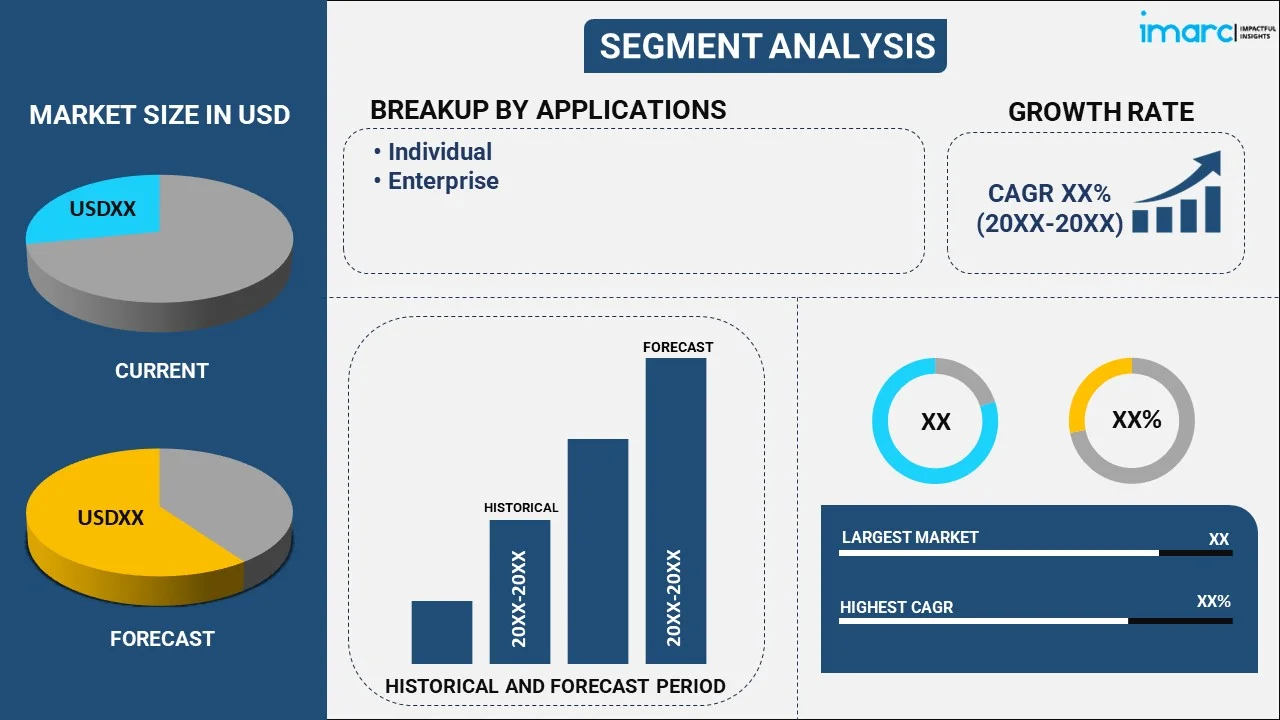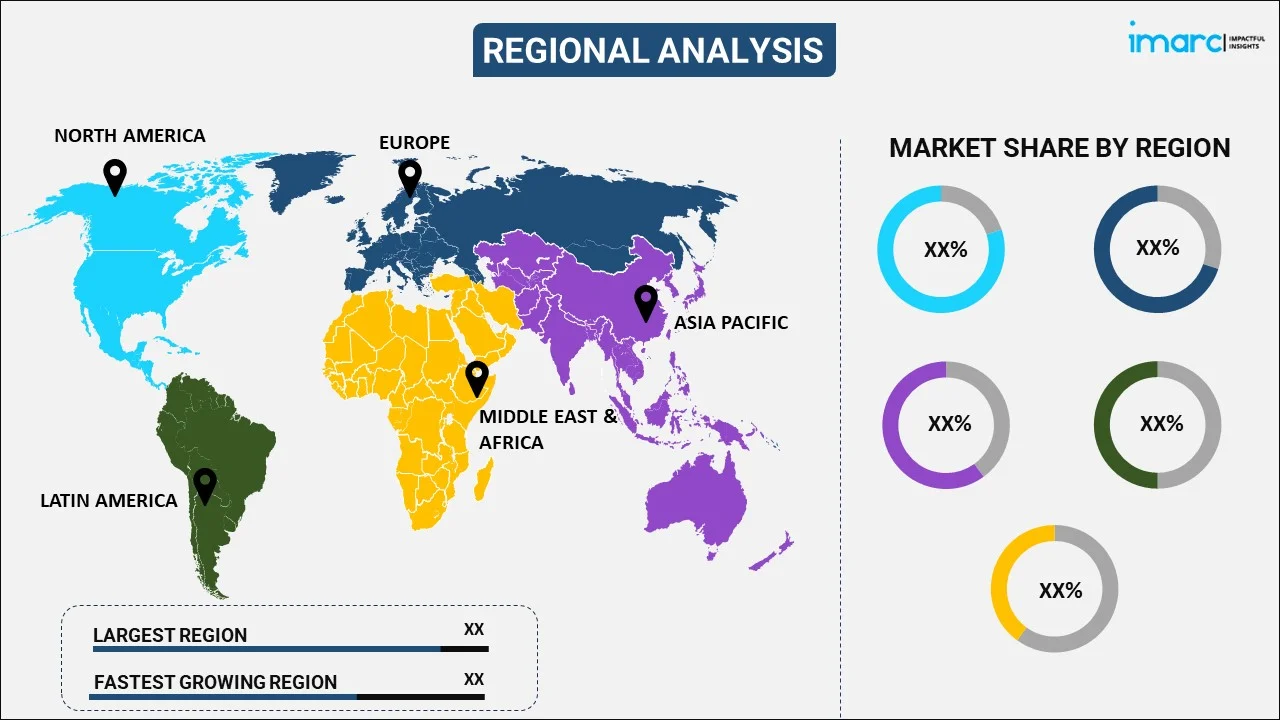
Interior Design Software Market Report by Application (Individual, Enterprise), End User (Residential Sector, Non-Residential Sector), and Region 2025-2033
Market Overview:
The global interior design software market size reached USD 5.3 Billion in 2024. Looking forward, IMARC Group expects the market to reach USD 10.4 Billion by 2033, exhibiting a growth rate (CAGR) of 7.3% during 2025-2033. The market is experiencing significant growth mainly driven by the rising demand for advanced visualization tools, AI integration and cloud-based solutions. Enhanced collaboration, personalized design capabilities and sustainability features also contributing positively to the market demand further across the globe.
|
Report Attribute
|
Key Statistics
|
|---|---|
|
Base Year
|
2024
|
|
Forecast Years
|
2025-2033
|
|
Historical Years
|
2019-2024
|
|
Market Size in 2024
|
USD 5.3 Billion |
|
Market Forecast in 2033
|
USD 10.4 Billion |
| Market Growth Rate 2025-2033 | 7.3% |
Interior design software refers to a computer-based tool that is used for designing and creating building plans and layouts. It is widely used by architects, engineers, and contractors to check the interior quality at an early stage of the designing process. It can also be employed to place floor plans, beds, tables, doors, windows, and interior decor in a realistic, three-dimensional (3D) environment. Interior design software assists in reducing errors, managing time, and monitoring, accessing, and identifying any disparity between the proposed design and the real building or conduction. It also aids in taking preventive measures to eliminate the need for rebuilding and remodeling.

Interior Design Software Market Trends:
Enhanced Visualization
Enhanced visualization through AR and VR technologies revolutionizes interior design by allowing designers and clients to immerse themselves in realistic 3D models of spaces. For instance, in April 2024, SketchUp for iPad launched the Scan-to-Design feature, allowing designers to turn scans of spaces into organized 3D models swiftly. This innovation greatly reduces the time from site gathering to conceptual design. The app uses Apple’s RoomPlan APIs for customizable geometries, simplifying the design process in one platform. The integration of AR and VR capabilities has been a key factor in boosting the interior design software market share, particularly for platforms offering seamless and intuitive user experiences. With AR (Augmented Reality), users can overlay digital designs onto physical environments using devices like smartphones or tablets. This enables them to see how new elements fit into existing spaces in real-time. VR (Virtual Reality) offers fully immersive experiences where clients can virtually walk through and interact with a designed space before any physical changes are made. This interactive approach improves decision-making by providing a clear, tangible vision of the outcome, leading to higher client satisfaction and reduced design revisions.
Integration of Artificial Intelligence (AI) and Machine Learning (ML)
Artificial Intelligence (AI) and Machine Learning (ML) are transforming interior design software by automating repetitive tasks and generating innovative design suggestions. AI-powered tools streamline space planning, allowing designers to focus more on creativity and efficiency. For instance, in February 2024, Venus Williams launched an AI interior design platform called Palazzo, which allows users to upload photos of their rooms and receive customized design makeovers through an AI chatbot. In line with this, machine learning algorithms analyze user preferences and behaviors to offer personalized design recommendations, tailoring workflows to individual needs. This personalization enhances the user experience, ensuring that design solutions align closely with client tastes and project requirements. Collectively, these technologies not only boost productivity but also inspire creativity, enabling designers to deliver customized, high-quality interiors with greater speed and precision.
Increase in Cloud-Based Solutions
Cloud-based interior design software revolutionizes the workflow by enabling designers to access projects from any location, fostering seamless collaboration among team members and clients worldwide. This accessibility ensures that updates and feedback are instantly shared, enhancing communication and speeding up decision-making processes. Additionally, the cloud provides scalable storage solutions, allowing designers to handle large and complex projects without the constraints of local storage limitations. This flexibility supports the management of extensive 3D models, high-resolution images, and multiple project versions efficiently. In line with this, In September 2024, HON launched the HON Collection Configurator, a 3D product configuration tool by 3D Cloud. This software simplifies the design-to-order process, allowing users to arrange seating products, visualize configurations in Augmented Reality, and generate detailed product lists. With customizable options, it enhances engagement and communication for designers and sales partners. Overall, cloud-based platforms enhance productivity, ensure data security, and accommodate the growing needs of modern interior design practices.
Key Market Segmentation:
IMARC Group provides an analysis of the key trends in each segment of the global interior design software market report, along with forecasts at the global, regional and country levels from 2025-2033. Our report has categorized the market based on application and end user.
Breakup by Application:

- Individual
- Enterprise
Breakup by End User:
- Residential Sector
- Non-Residential Sector
Breakup by Region:

- North America
- United States
- Canada
- Asia-Pacific
- China
- Japan
- India
- South Korea
- Australia
- Indonesia
- Others
- Europe
- Germany
- France
- United Kingdom
- Italy
- Spain
- Russia
- Others
- Latin America
- Brazil
- Mexico
- Others
- Middle East and Africa
Competitive Landscape:
The report has also provided a comprehensive analysis of the competitive landscape in the global interior design software market. Detailed profiles of all major companies have also been provided. Some of the companies covered include:
- Asynth
- Autodesk Inc.
- BeLight Software Ltd
- Chief Architect Inc.
- Dassault Systemes SE
- Home Hardware Stores Limited
- Infurnia Technologies Pvt. Ltd
- Planner 5D
- RoomSketcher AS
- Roomtodo OU
- SmartDraw Software LLC
- Trimble Inc.
Kindly note that this only represents a partial list of companies, and the complete list has been provided in the report.
Interior Design Software Market News:
- In July 2023, Wayfair launched Decorify, a generative AI solution that transforms interior design by allowing users to upload pictures of their spaces. This tool generates multiple design options based on selected styles, linking directly to relevant purchases. Wayfair’s CTO emphasized the importance of making tools that enhance the customer experience. The platform aims to provide a blend of inspiration and practicality, with plans for future enhancements using proprietary branding data.
- In May 2024, Bengaluru-based Infurnia, a startup specializing in architecture and interior design software, secured $1.2 million in an angel funding round. The funding will support market expansion and the onboarding of industry leaders, while enhancing its flagship design product and manufacturing execution system.
- In July 2024, Studio Designer, a leading business management platform for interior designers acquired Mydoma, enhancing its offerings for nearly 20,000 designers in the U.S. and Canada. The merger combines Studio Designer's comprehensive project management and accounting tools with Mydoma's focus on lead generation and project management, catering to firms of all sizes.
Report Coverage:
| Report Features | Details |
|---|---|
| Base Year of the Analysis | 2024 |
| Historical Period | 2019-2024 |
| Forecast Period | 2025-2033 |
| Units | Billion USD |
| Segment Coverage | Application, End User, Region |
| Region Covered | Asia Pacific, Europe, North America, Latin America, Middle East and Africa |
| Countries Covered | United States, Canada, Germany, France, United Kingdom, Italy, Spain, Russia, China, Japan, India, South Korea, Australia, Indonesia, Brazil, Mexico |
| Companies Covered | Asynth, Autodesk Inc., BeLight Software Ltd, Chief Architect Inc., Dassault Systemes SE, Home Hardware Stores Limited, Infurnia Technologies Pvt. Ltd, Planner 5D, RoomSketcher AS, Roomtodo OU, SmartDraw Software LLC and Trimble Inc. |
| Customization Scope | 10% Free Customization |
| Post-Sale Analyst Support | 10-12 Weeks |
| Delivery Format | PDF and Excel through Email (We can also provide the editable version of the report in PPT/Word format on special request) |
Key Questions Answered in This Report
The global interior design software market was valued at USD 5.3 Billion in 2024.
We expect the global interior design software market to exhibit a CAGR of 7.3% during 2025-2033.
The growing adoption of interior design software, as it aids in reducing errors, managing time, monitoring, accessing, and identifying any disparity between the proposed design and the real building or conduction, etc., is primarily driving the global interior design software market.
The sudden outbreak of the COVID-19 pandemic had led to the implementation of stringent lockdown regulations across several nations, resulting in the temporary halt in numerous construction and renovation activities, thereby negatively impacting the global market for interior design software.
Based on the application, the global interior design software market has been segregated into individual and enterprise, where enterprise currently exhibits a clear dominance in the market.
Based on the end user, the global interior design software market can be bifurcated into residential sector and non-residential sector. Currently, the residential sector holds the largest market share.
On a regional level, the market has been classified into North America, Asia-Pacific, Europe, Latin America, and Middle East and Africa, where North America currently dominates the global market.
Some of the major players in the global interior design software market include Asynth, Autodesk Inc., BeLight Software Ltd, Chief Architect Inc., Dassault Systemes SE, Home Hardware Stores Limited, Infurnia Technologies Pvt. Ltd, Planner 5D, RoomSketcher AS, Roomtodo OU, SmartDraw Software LLC, and Trimble Inc.
Need more help?
- Speak to our experienced analysts for insights on the current market scenarios.
- Include additional segments and countries to customize the report as per your requirement.
- Gain an unparalleled competitive advantage in your domain by understanding how to utilize the report and positively impacting your operations and revenue.
- For further assistance, please connect with our analysts.
 Request Customization
Request Customization
 Speak to an Analyst
Speak to an Analyst
 Request Brochure
Request Brochure
 Inquire Before Buying
Inquire Before Buying




.webp)




.webp)












